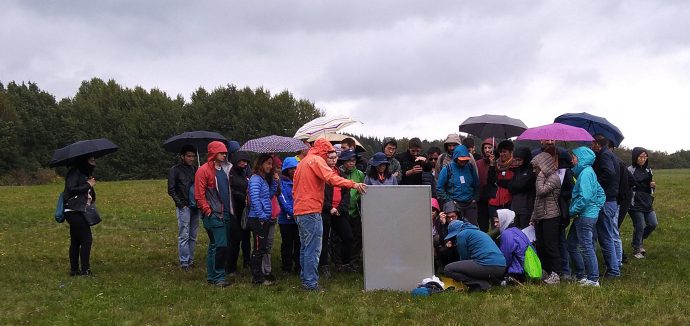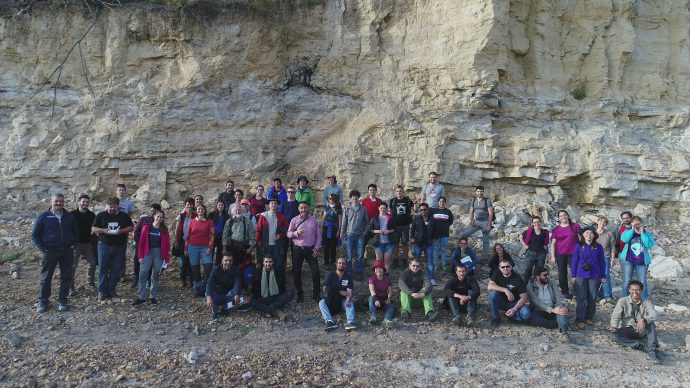The INQUA Summer School on Active Tectonics and Tectonic Geomorphology was held in Prague from 24-27 September, 2019. This summer school was run by INQUA‘s IFG EGSHaz as part of the TERPRO commission. The event was hosted by the Institute of Rock Structure and Mechanics, Academy of Sciences of the Czech Republic, Dpt. Neotectonics and Thermochronology. Main organizer was IFG co-leader Petra Štěpančíková. We would also like to thank MSc. Jakub Stemberk, Monika Hladká, Jana Šreinová, the deputy director Dr. Filip Hartvich, and all the staff involved for their professionalism and warm hospitality. Overall, 50 participants and 14 lecturers from 25 countries participated in the summer school.

Thematic lecturers were given by internationally recognized experts in their field:
- Historical and archeoseismology (Luca Guerieri);
- Interpretation of paleoseismic events from trenching and geomorphic studies, and dating strategies to develop quantitative age constraints (Tom Rockwell);
- Difficulties in trenching in intraplate settings (Petr Špaček); Alternative Quaternary Dating Techniques for Paleoseismic Studies (Tom Rockwell);
- Secondary seismic hazards – liquefaction, landslides, tsunamis; recent and ancient (Klaus Reicherter);
- Seismically triggered landslides – criteria allowing identification of past seismically triggered rockslides and on the controversies and complexities of their discrimination from slope failures of other genesis (Alexander Strom);
- Seismites vs periglacial features – difficulties in their discrimination (Gosia Pisarska);
- Tectonic geomorphology – Great new data and how to get them (Christoph Grützner);
- Active faults from a geodetic point of view – Seismic and aseismic slip on active faults: how space geodesy has changed our vision of the seismic cycle (Cecile Lasserre); and
- Seismic hazard assessment, PSHA, DSHA (Ioannis Papanikolaou).
The participants also visited the laboratories of the Institute of Rock Structure and Mechanics and were introduced into the topic of thermochronology by Annika Szameitat.

After two days of lectures, most participants joined a two-days field trip (guide book is available for download here: http://www.earthquakegeology.com/index.php?page=publications&s=6). Main target was the Cenozoic Eger Rift system in the western Czech Republic. On the first day, we got an introduction to the rift and visited the southern marginal fault. The next stops included paleostress and landslide sites, fault outcrops, and a demonstration of UAV remote sensing. This day was led by M. Coubal and F. Hartvich.
The second day was mainly devoted to the Cheb Basin, where the youngest surface-rupturing earthquake in Central Europe was recently found in a paleoseismological trenching study at the Mariánské Lázně Fault. The day started with a visit of the Soos CO2 emanation site within the famous Vogtland earthquake swarm area. We were then introduced to the nearby geodynamic observatory and seismic station at Skalná, where also an extensiometer experiment is ongoing for several years. At the trench site, different geophysical techniques for imaging faults were demonstrated and the trenching results were explained. The day ended with a visit of the Hartoušov and Bublák moffette field and a social dinner. This second day of the field trip was led by T. Fischer, F. Hartvich, P. Štěpančíková, and P. Tábořík.
We would like to thank all organisers and INQUA for providing a large number of travel grants that enabled Early Career Researchers and Researchers from Developing Countries to attend!



No Comments
No comments yet.